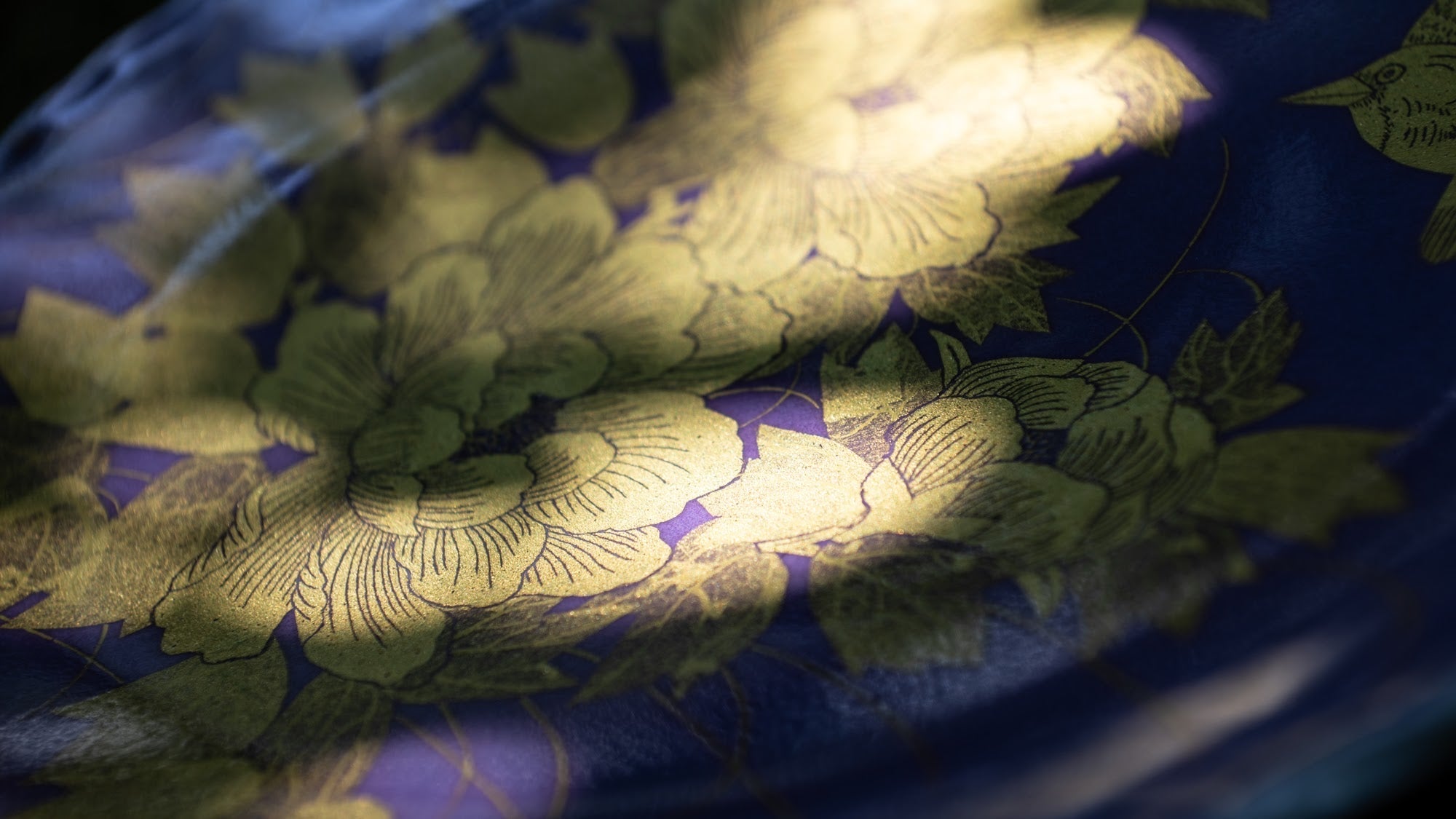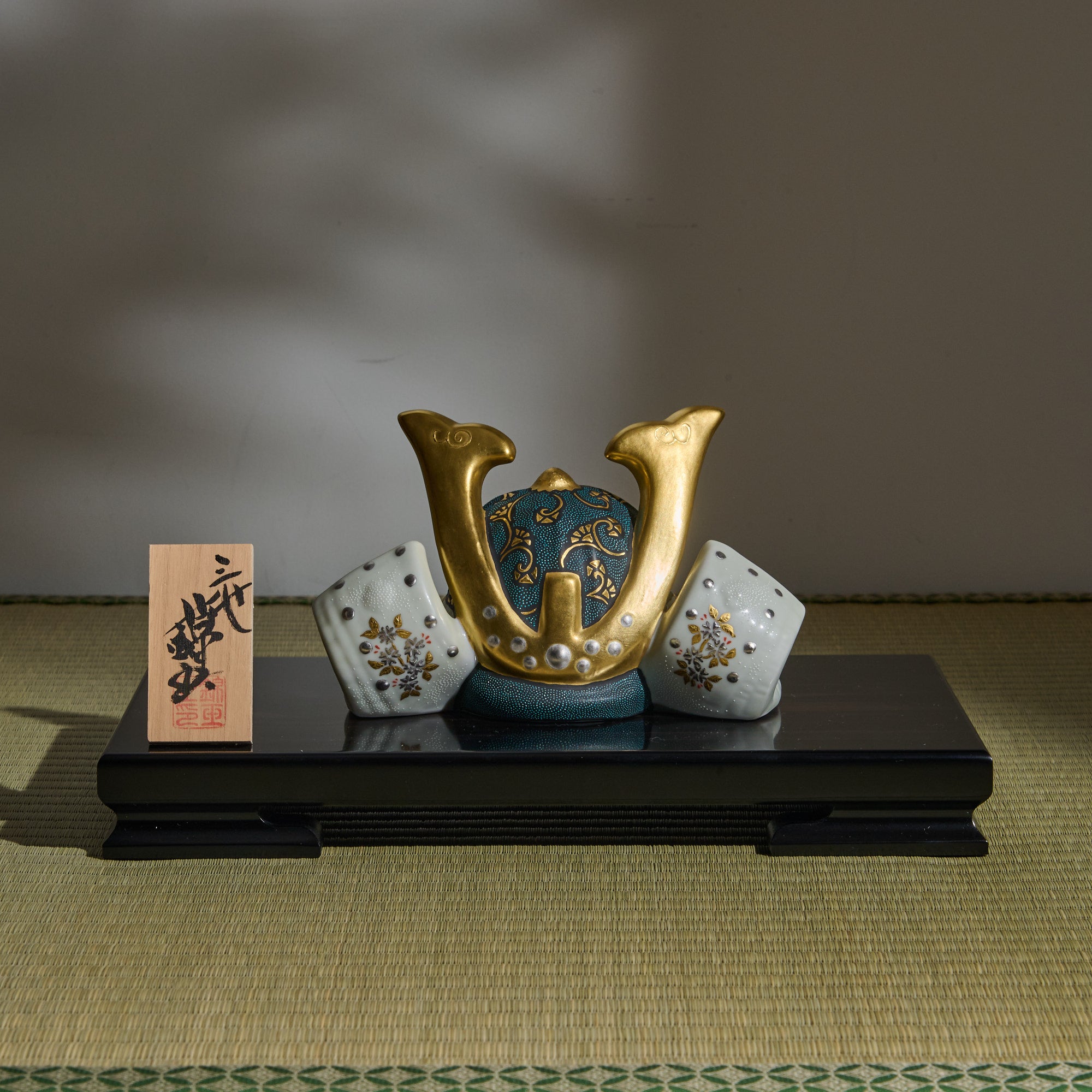
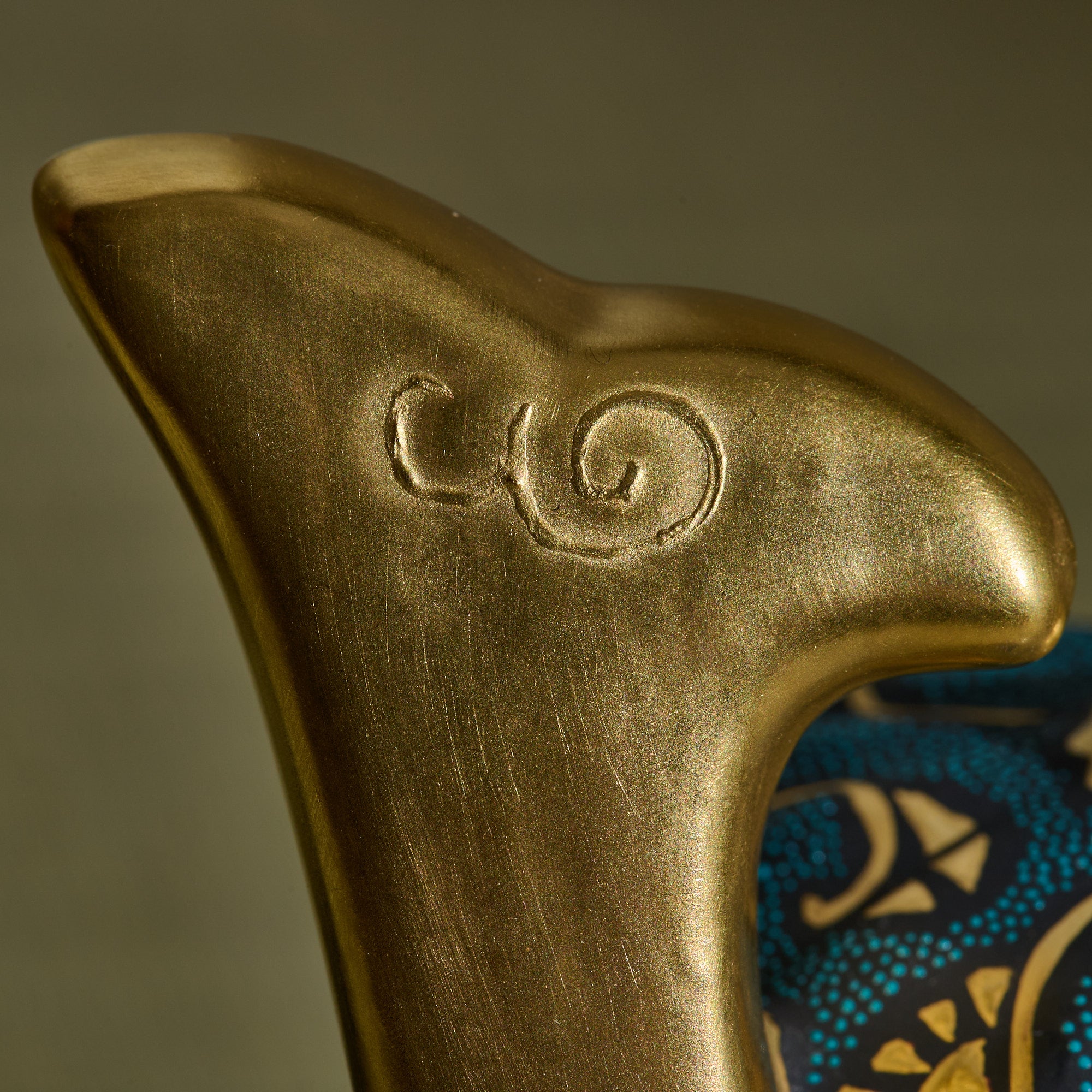
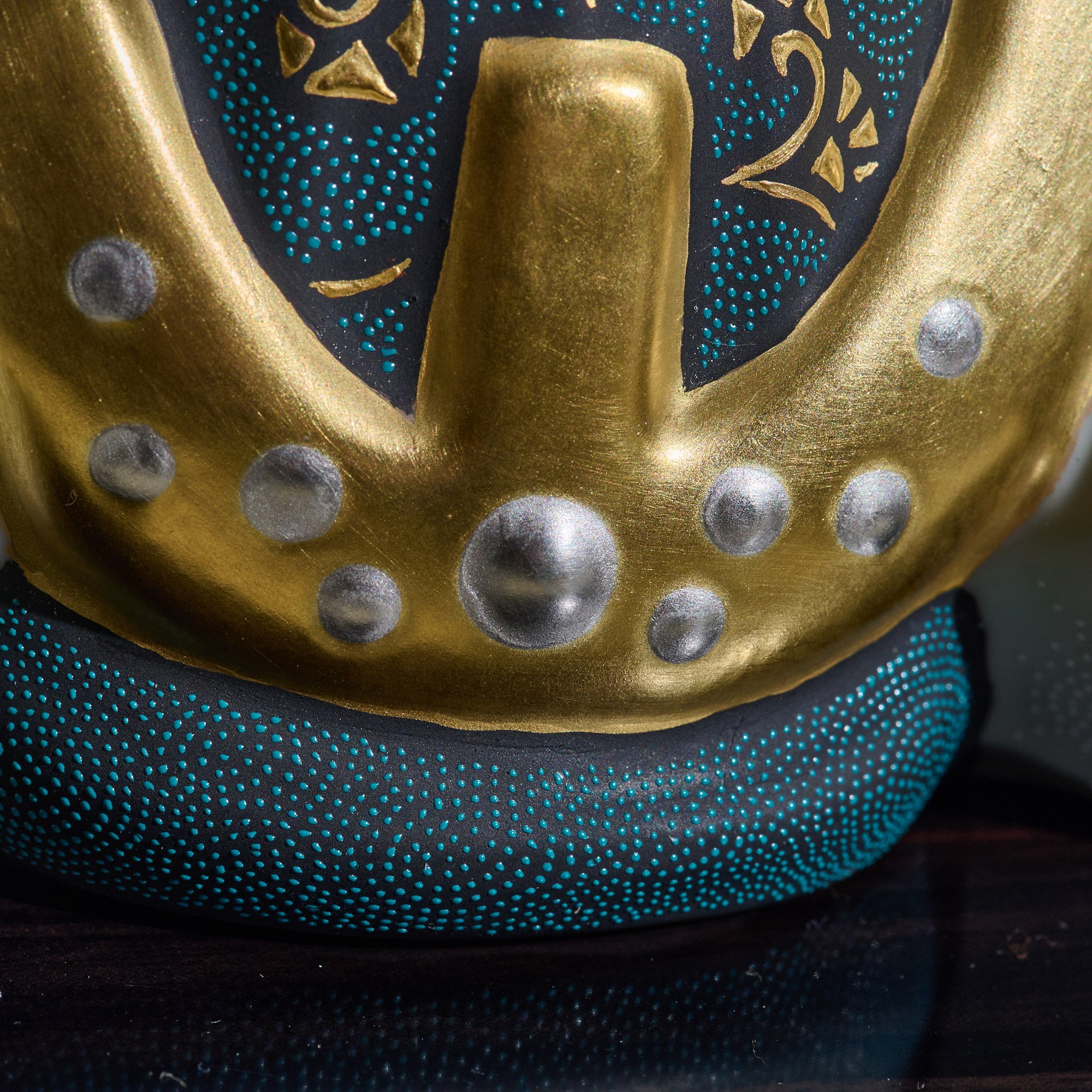
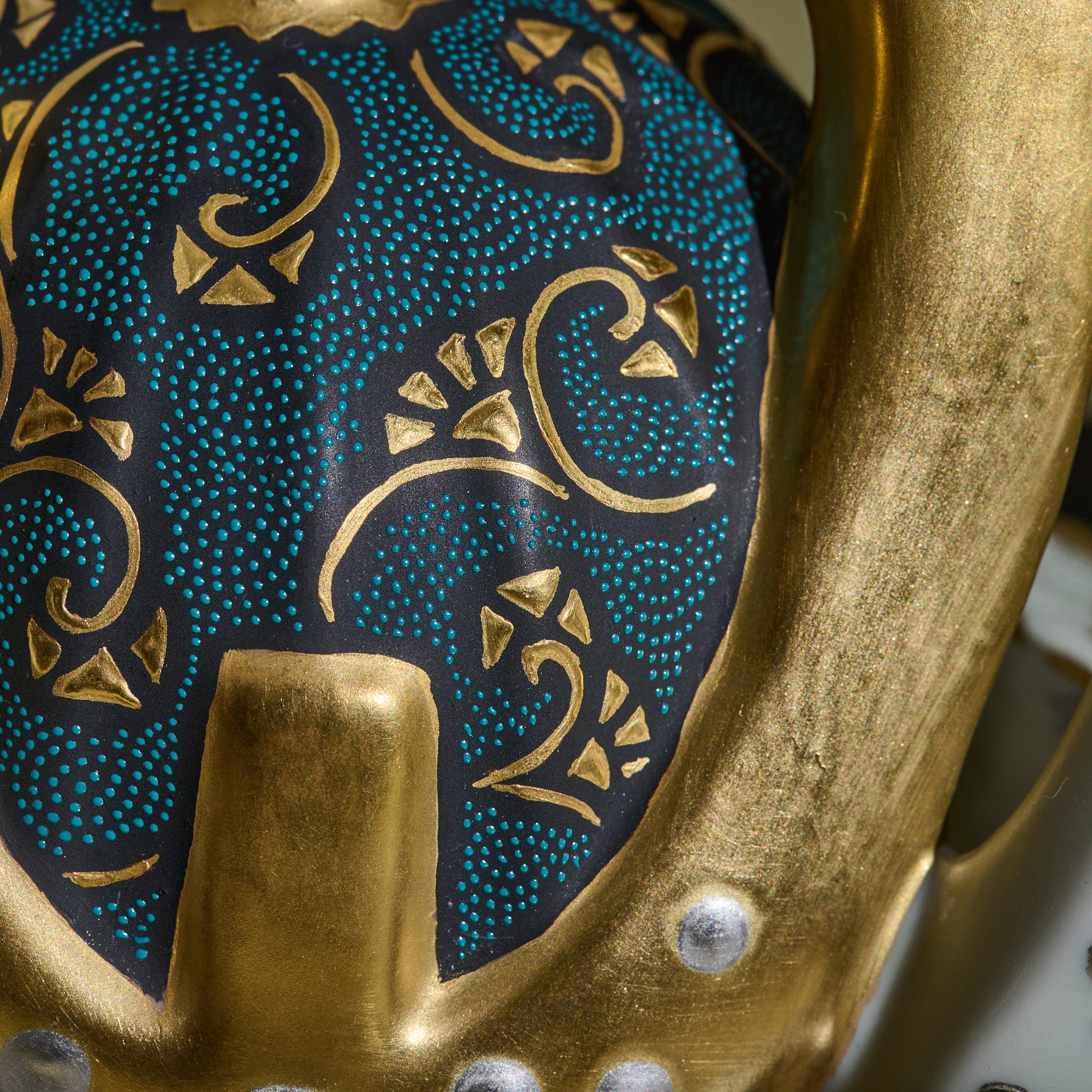
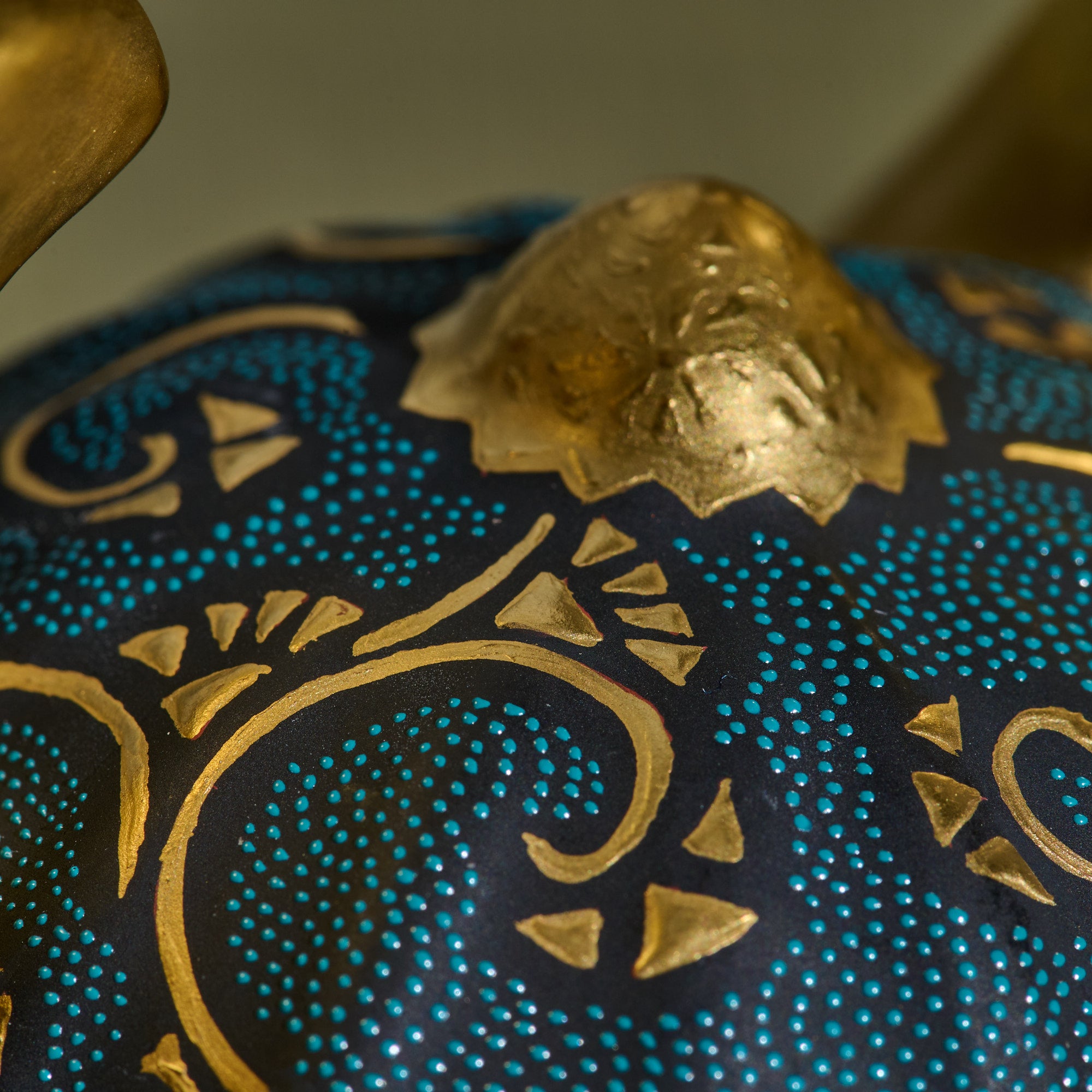
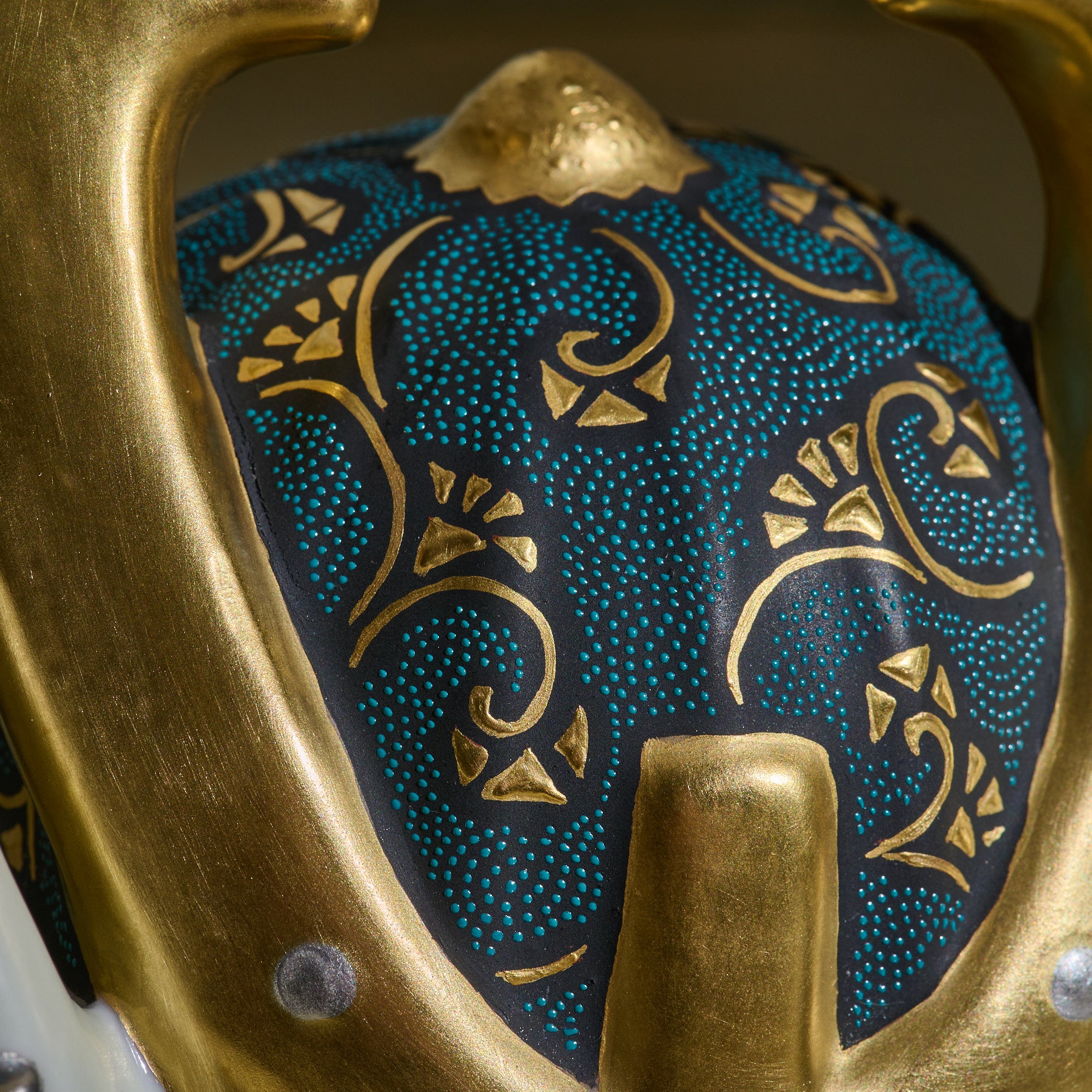
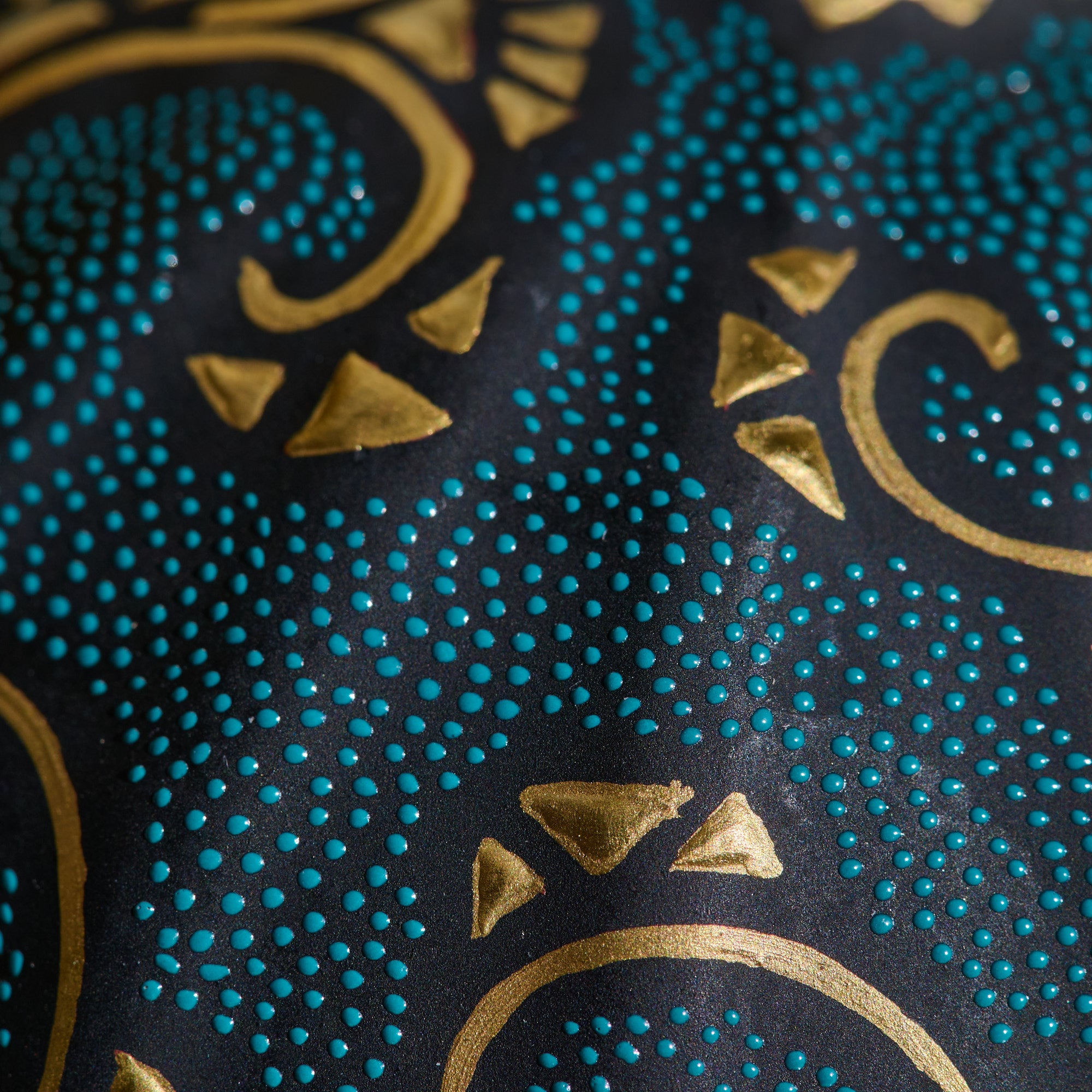
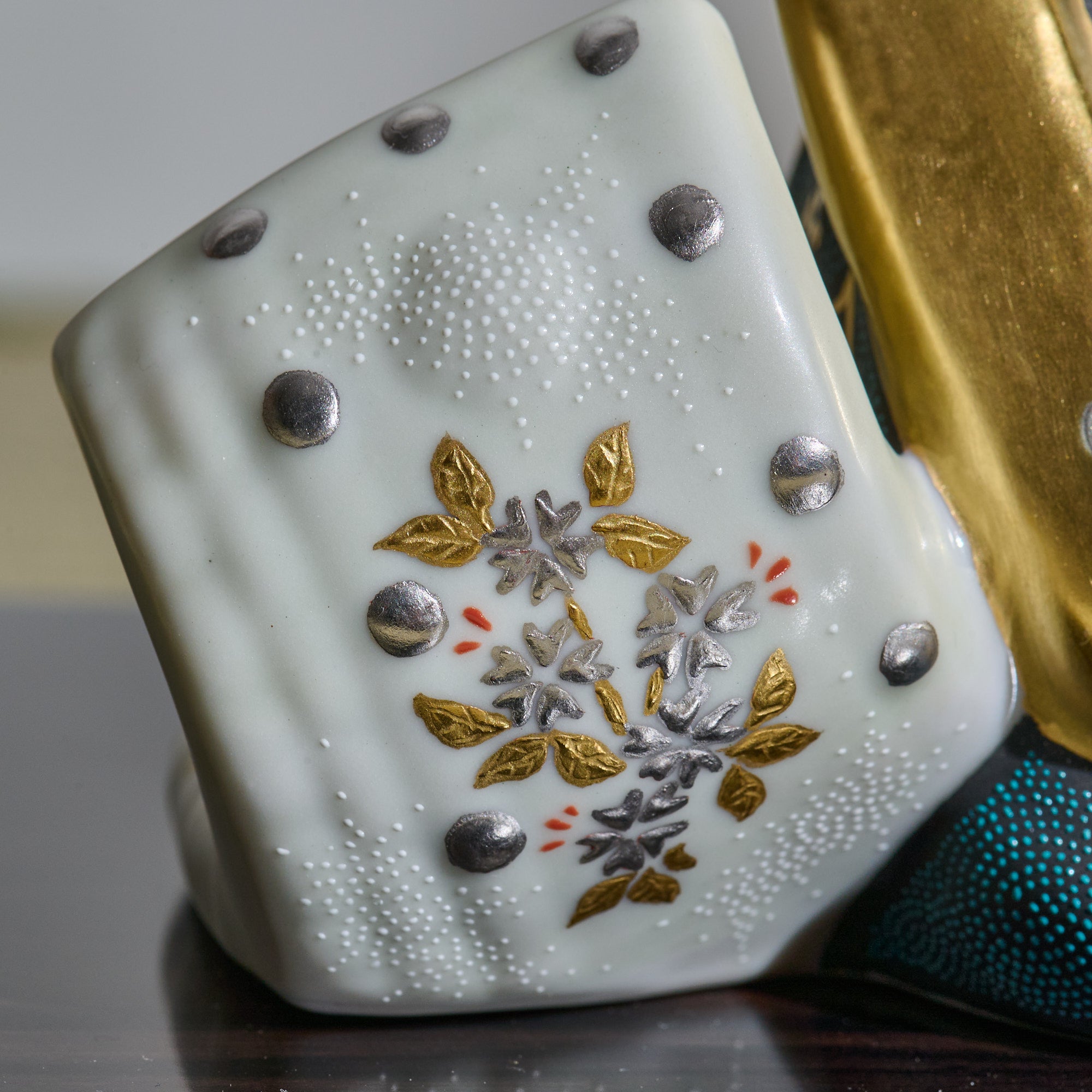
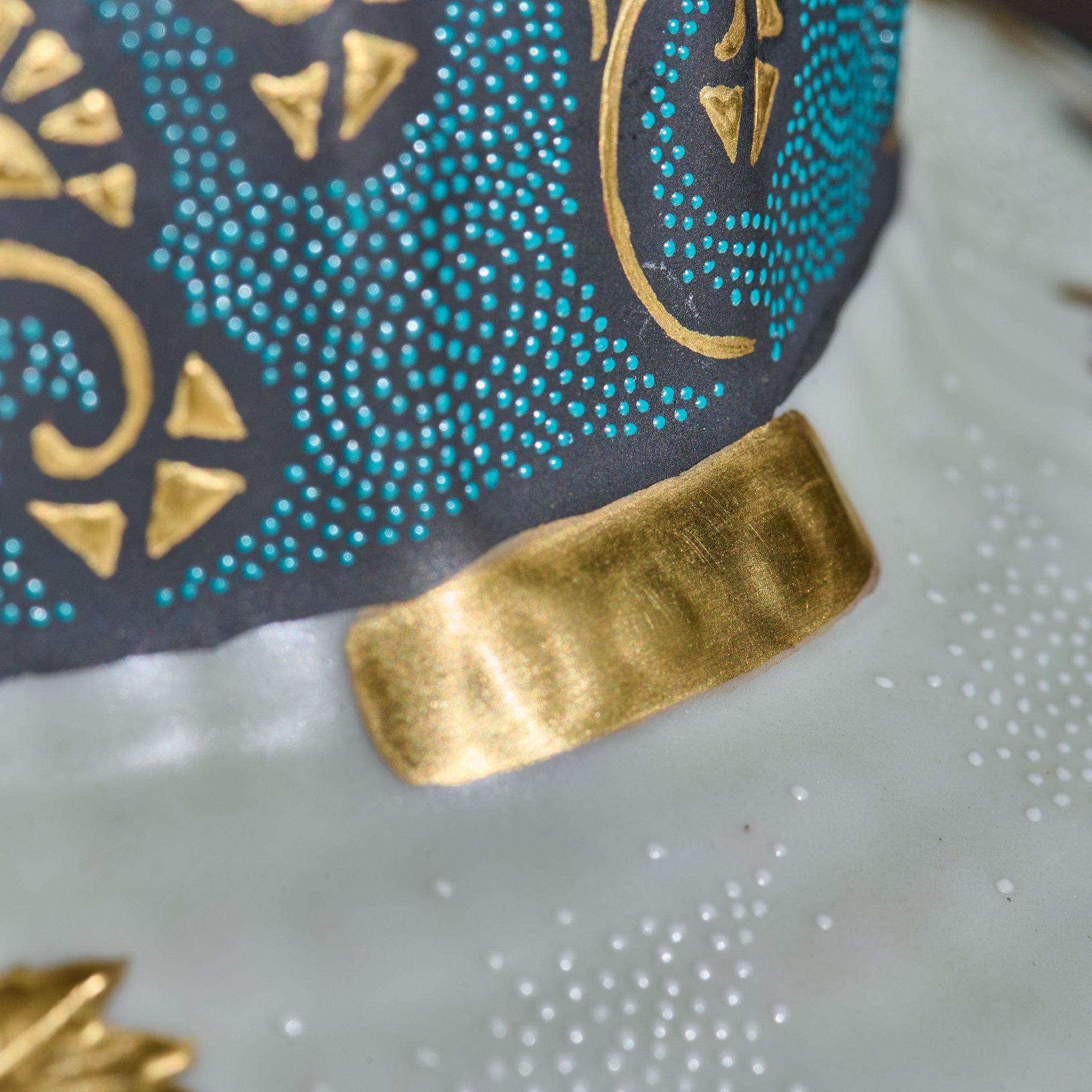
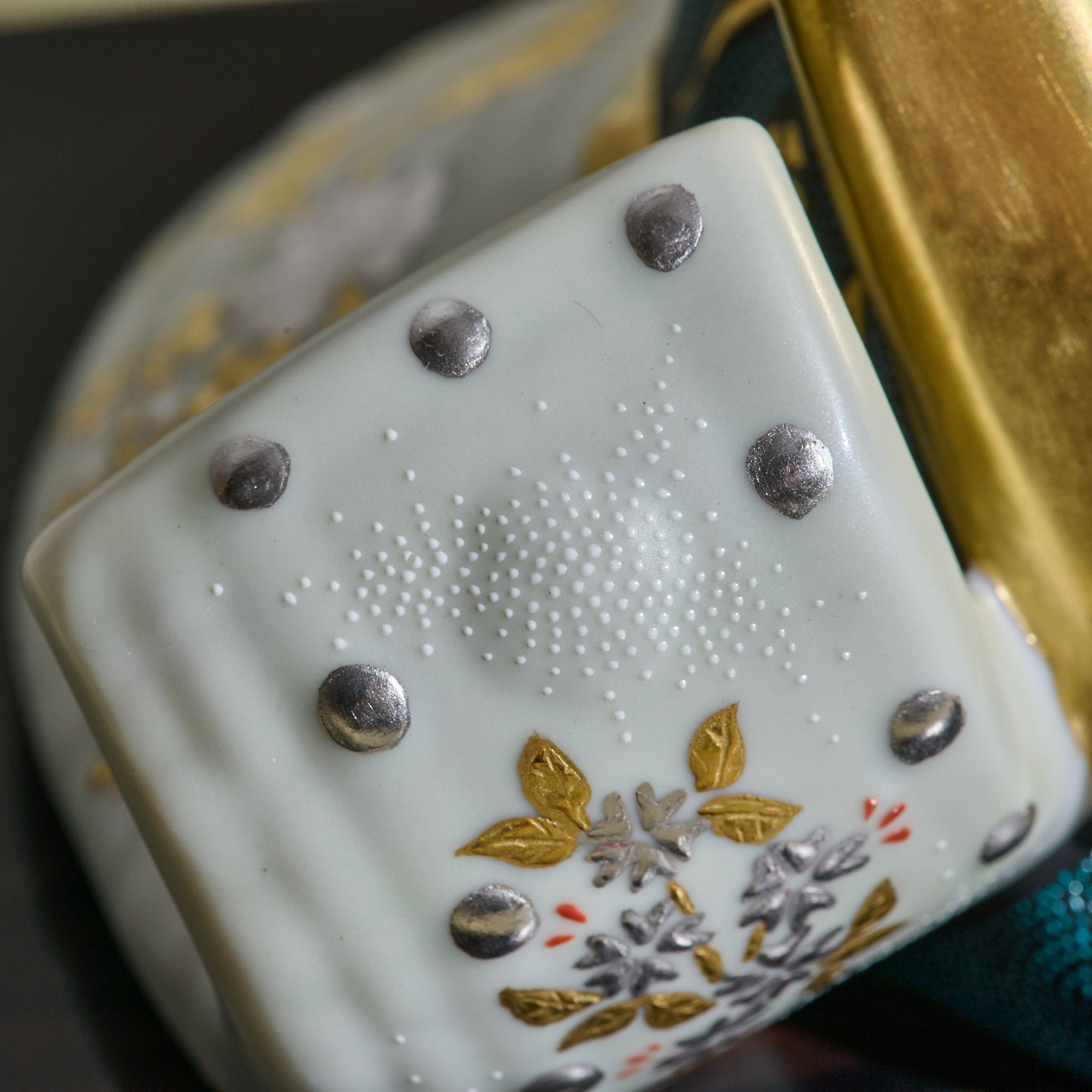
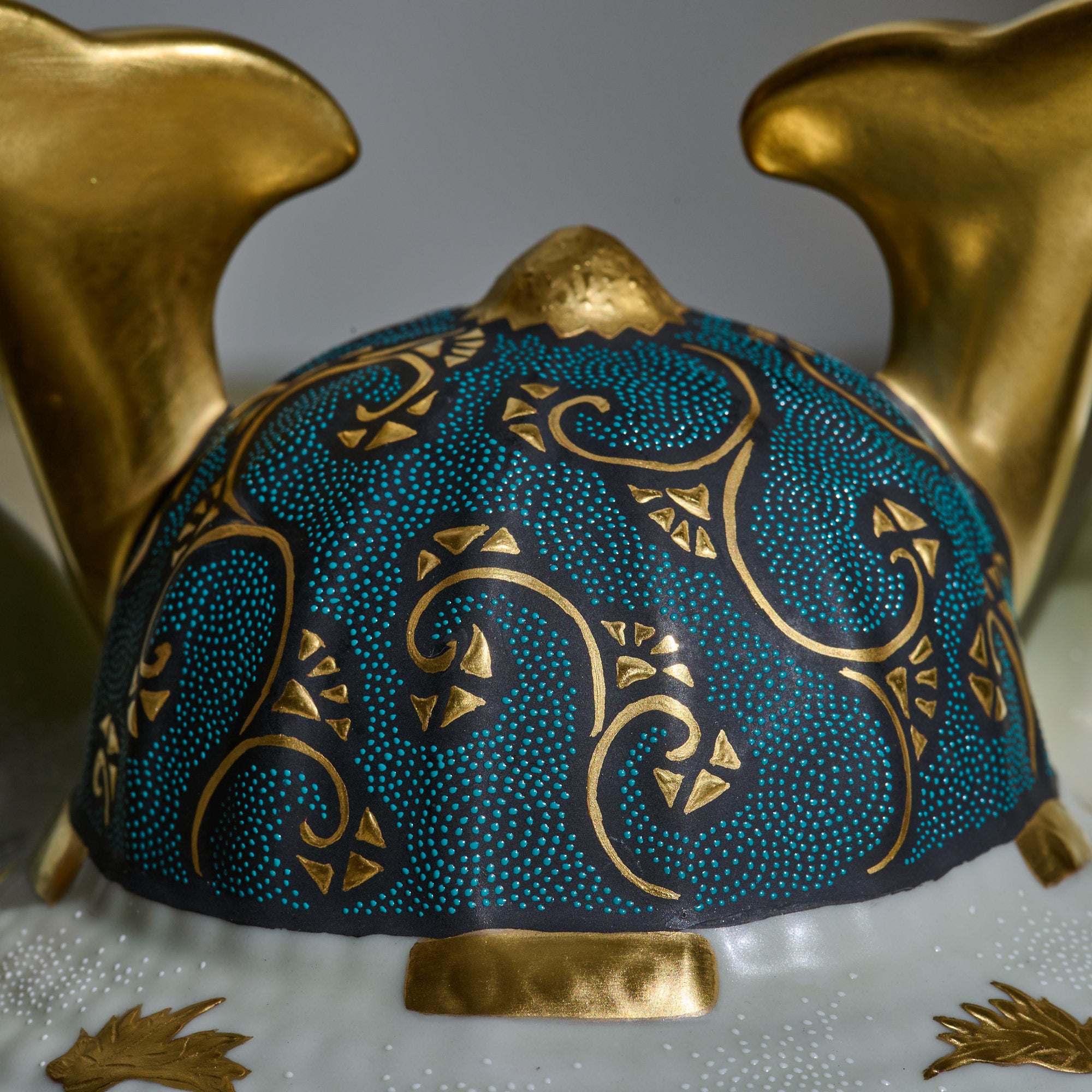
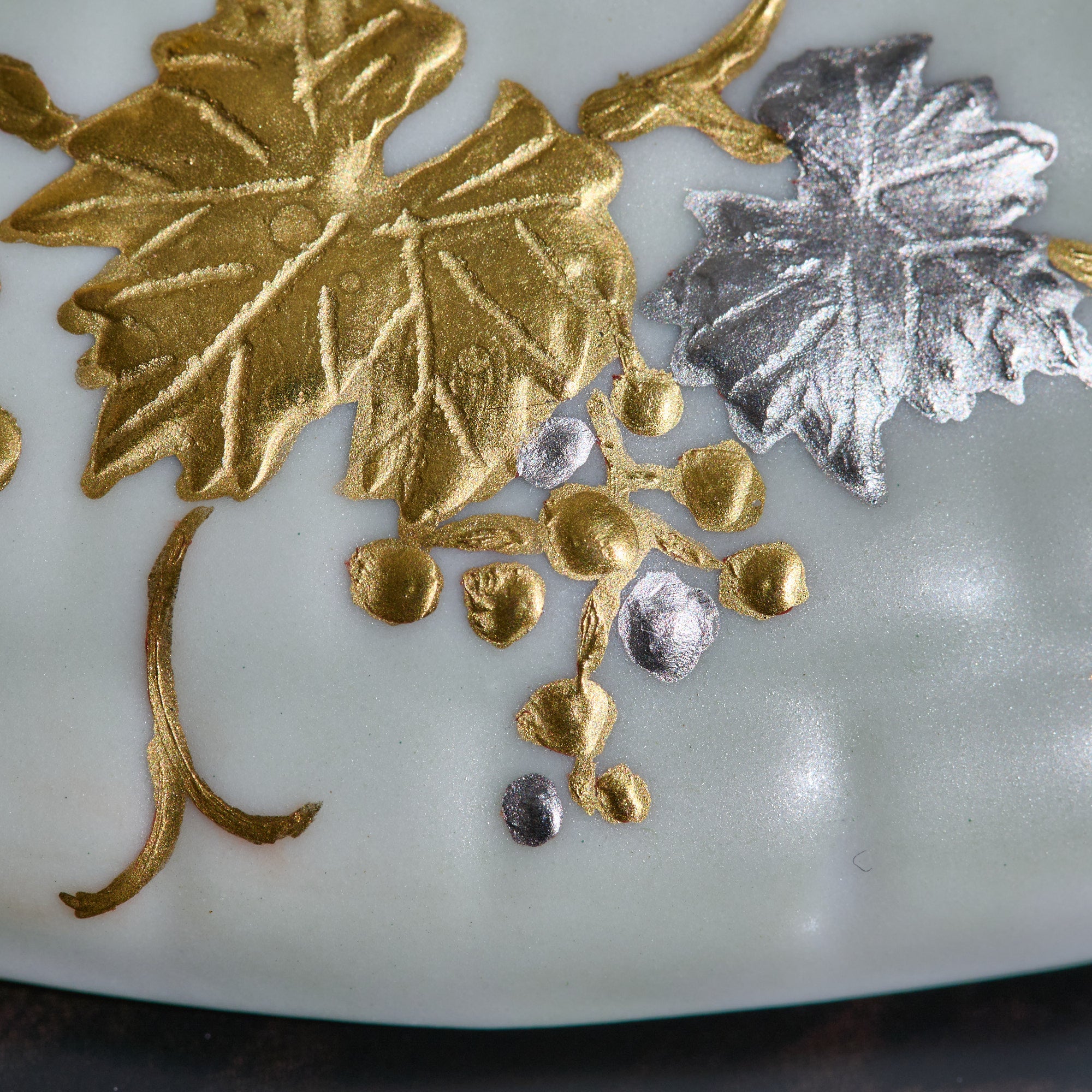
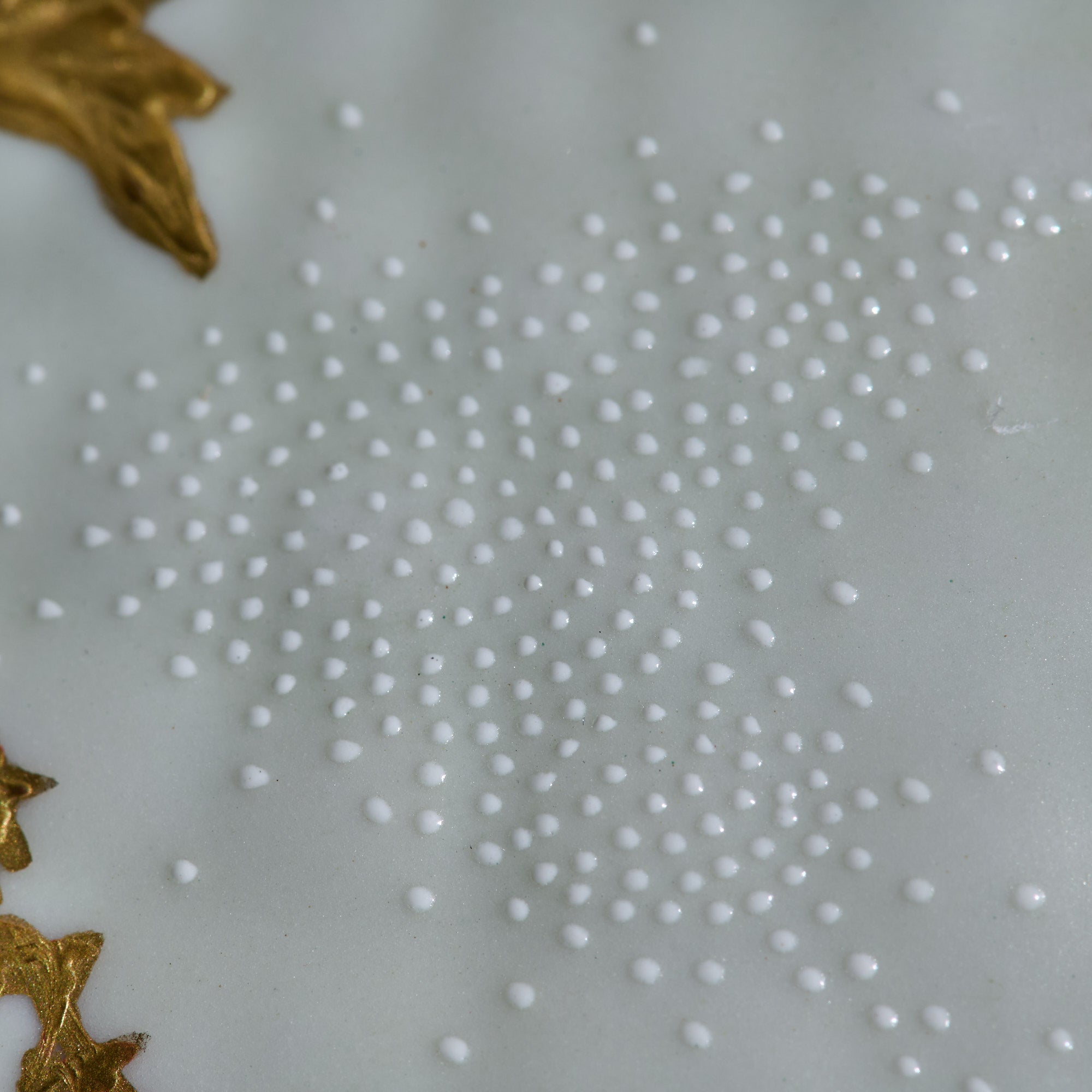
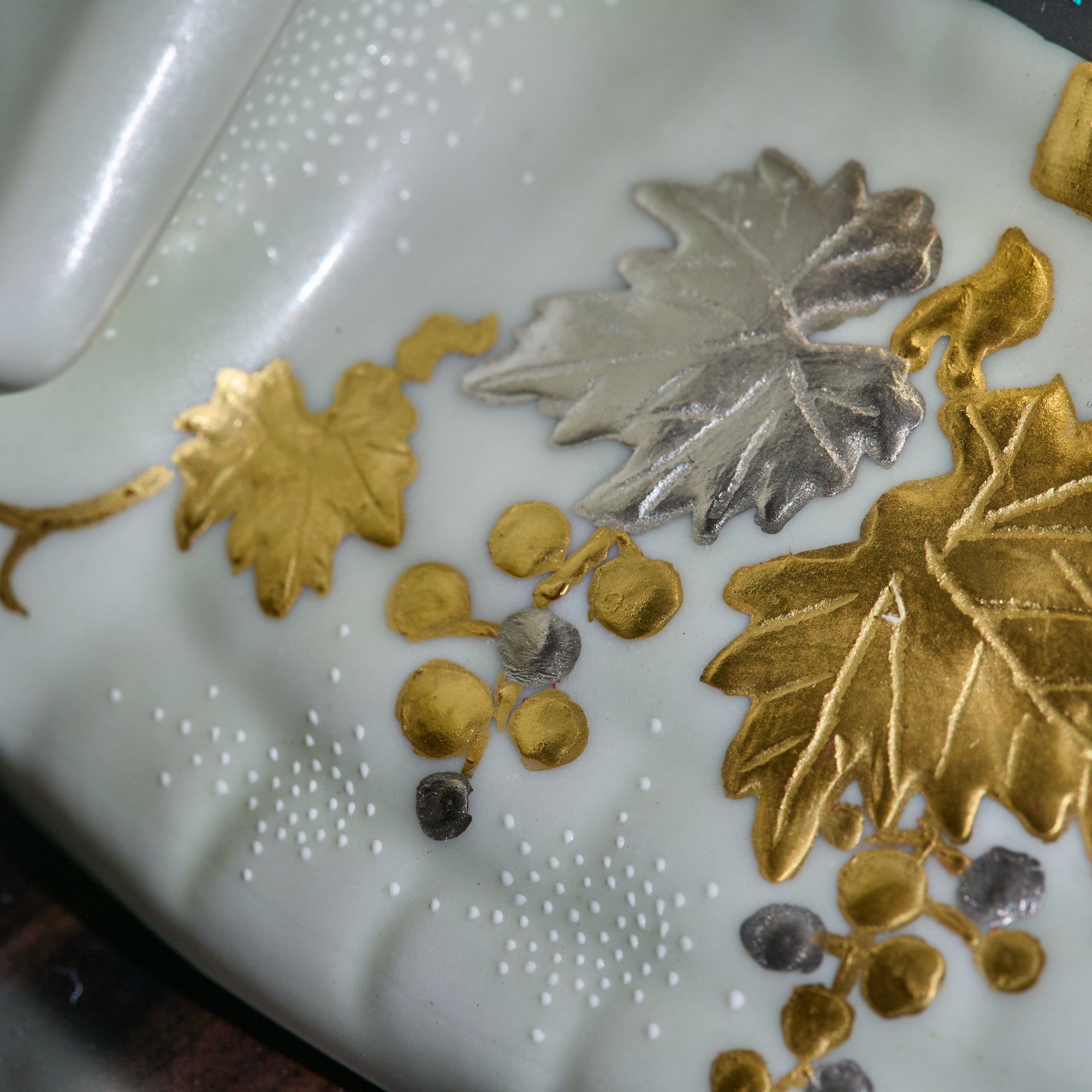
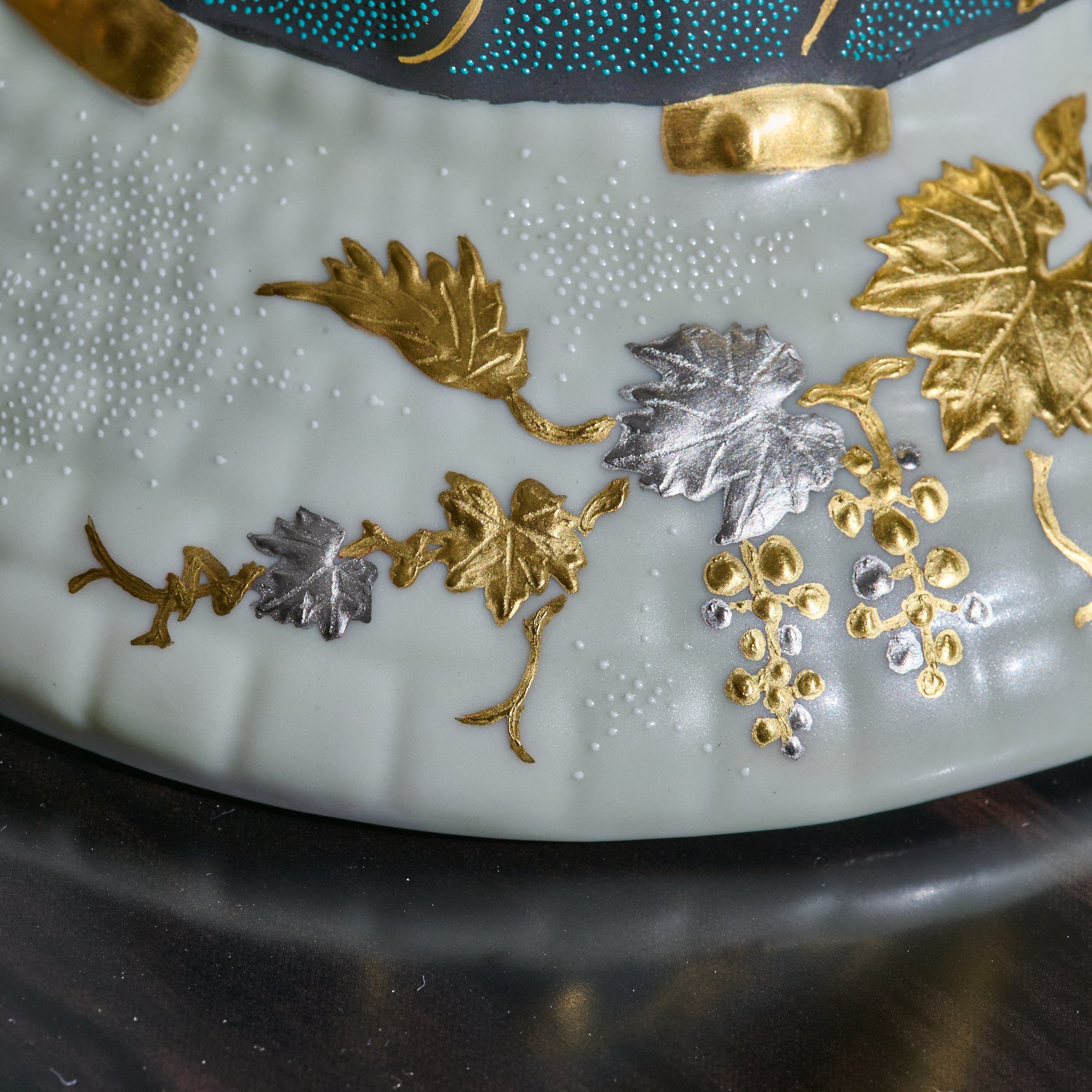
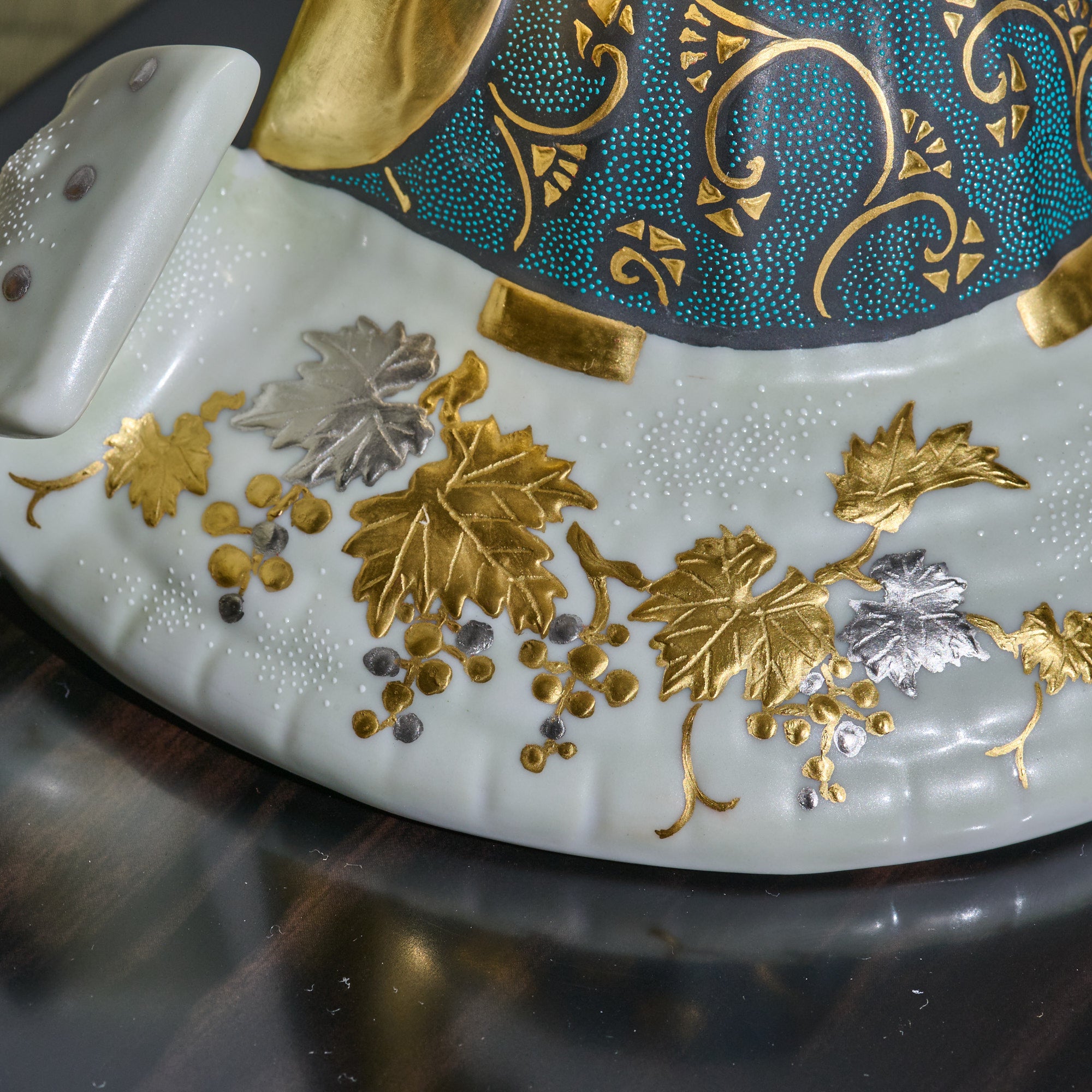
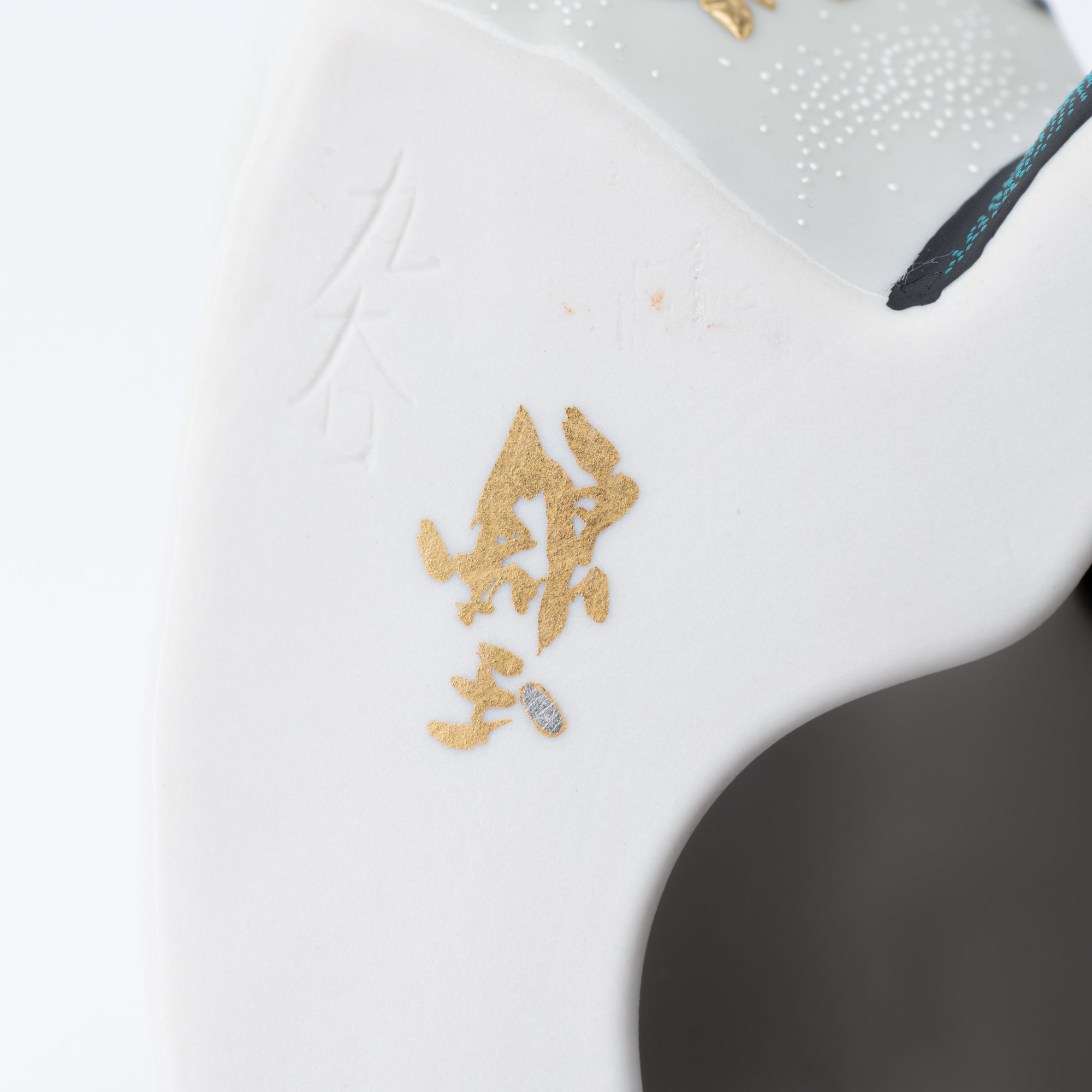
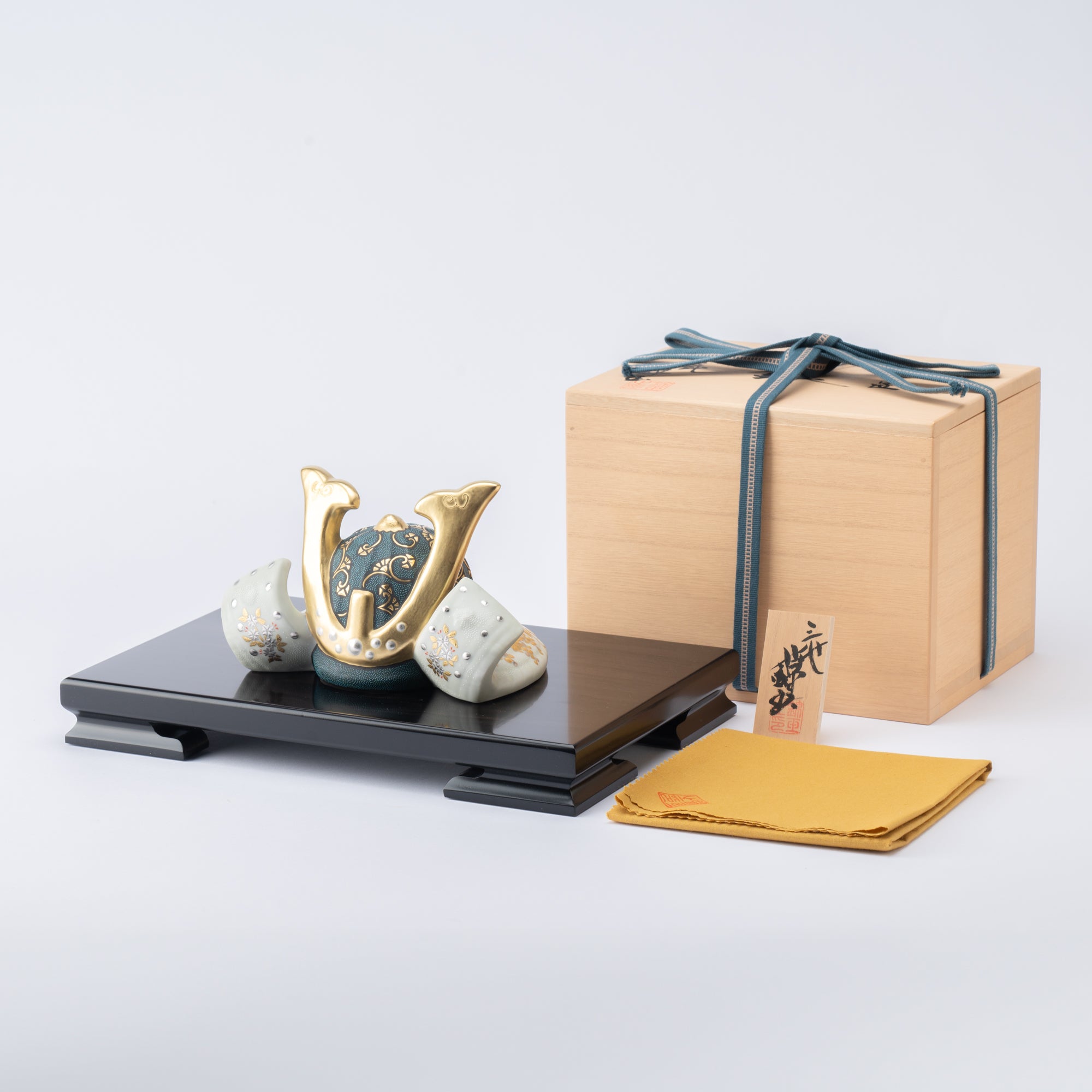
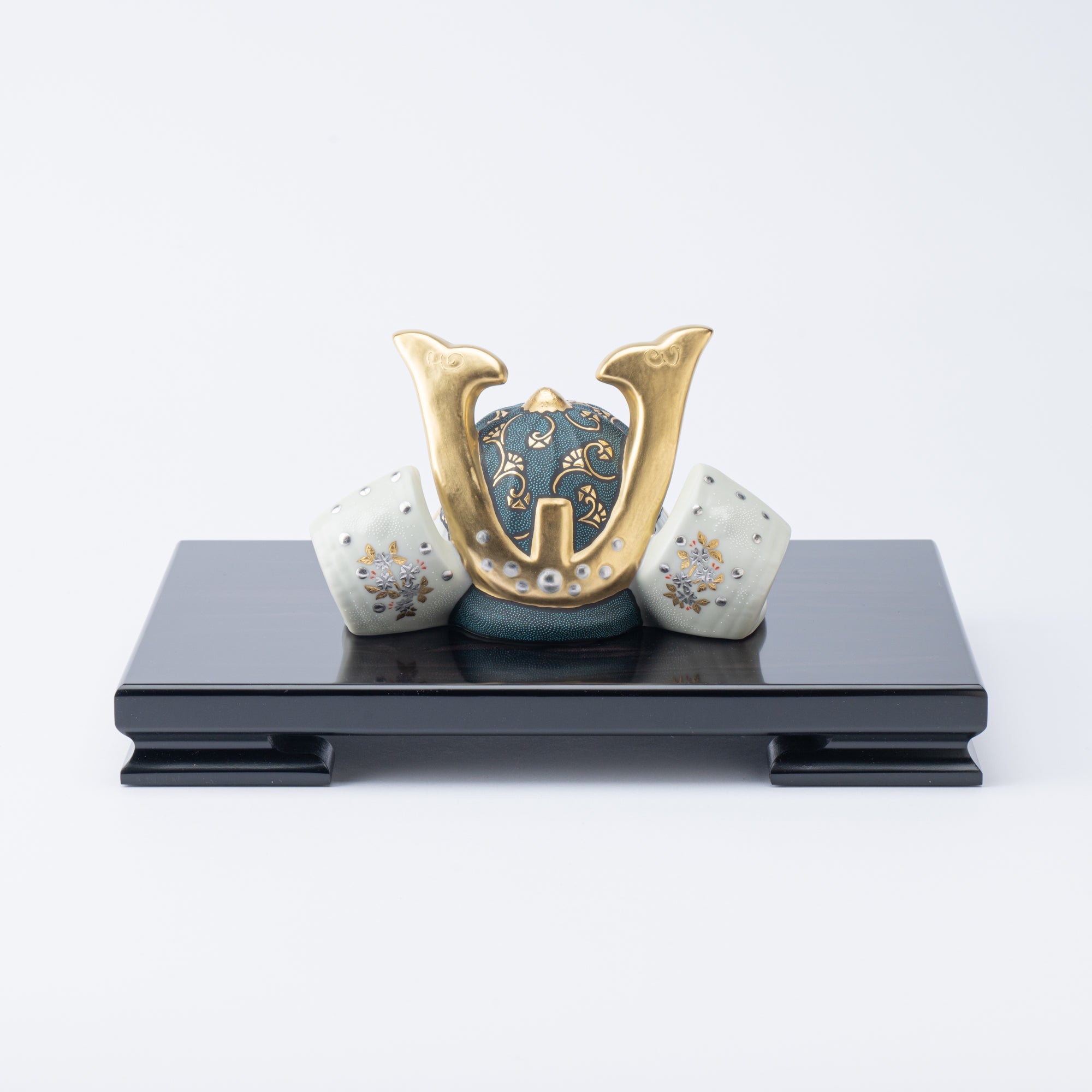
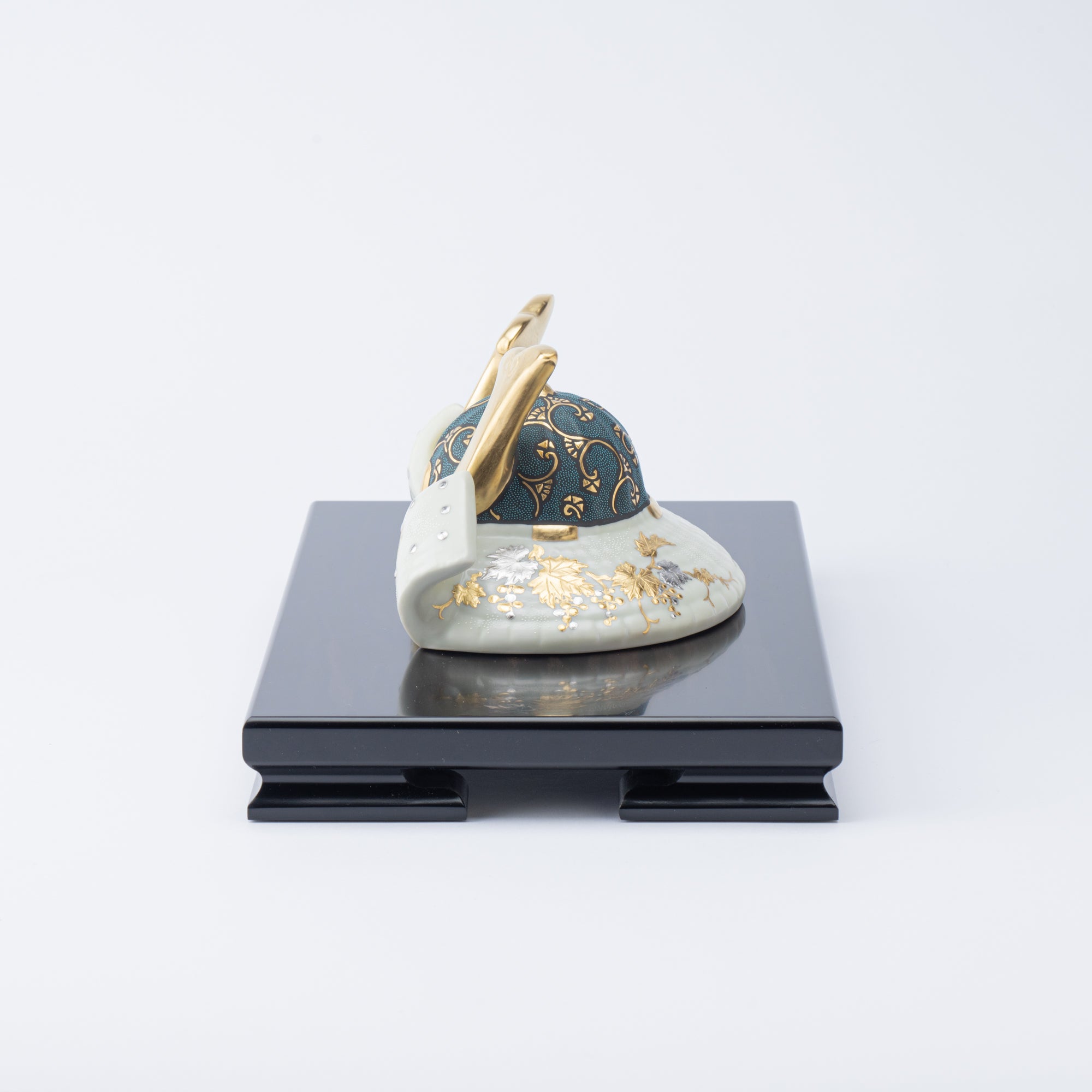
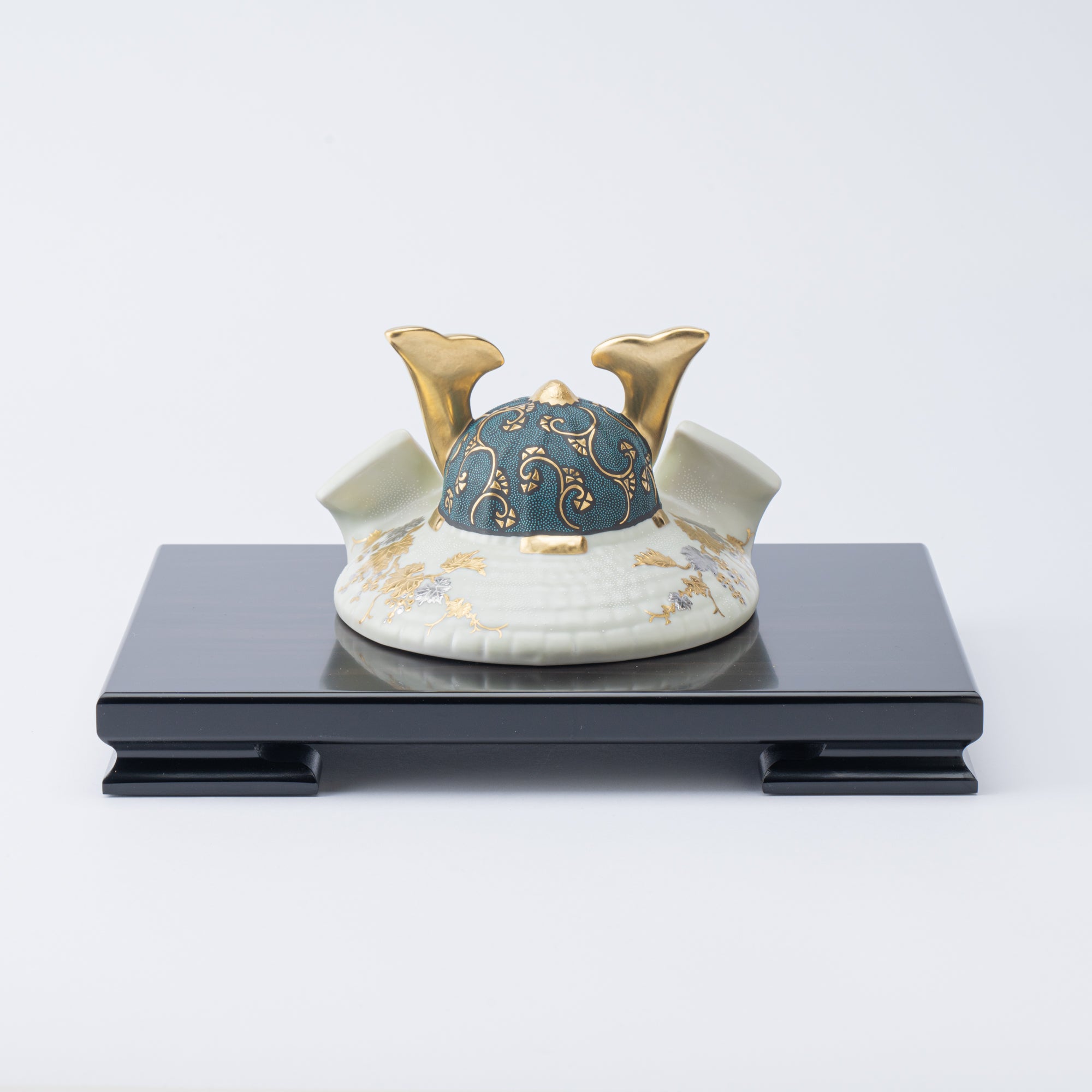
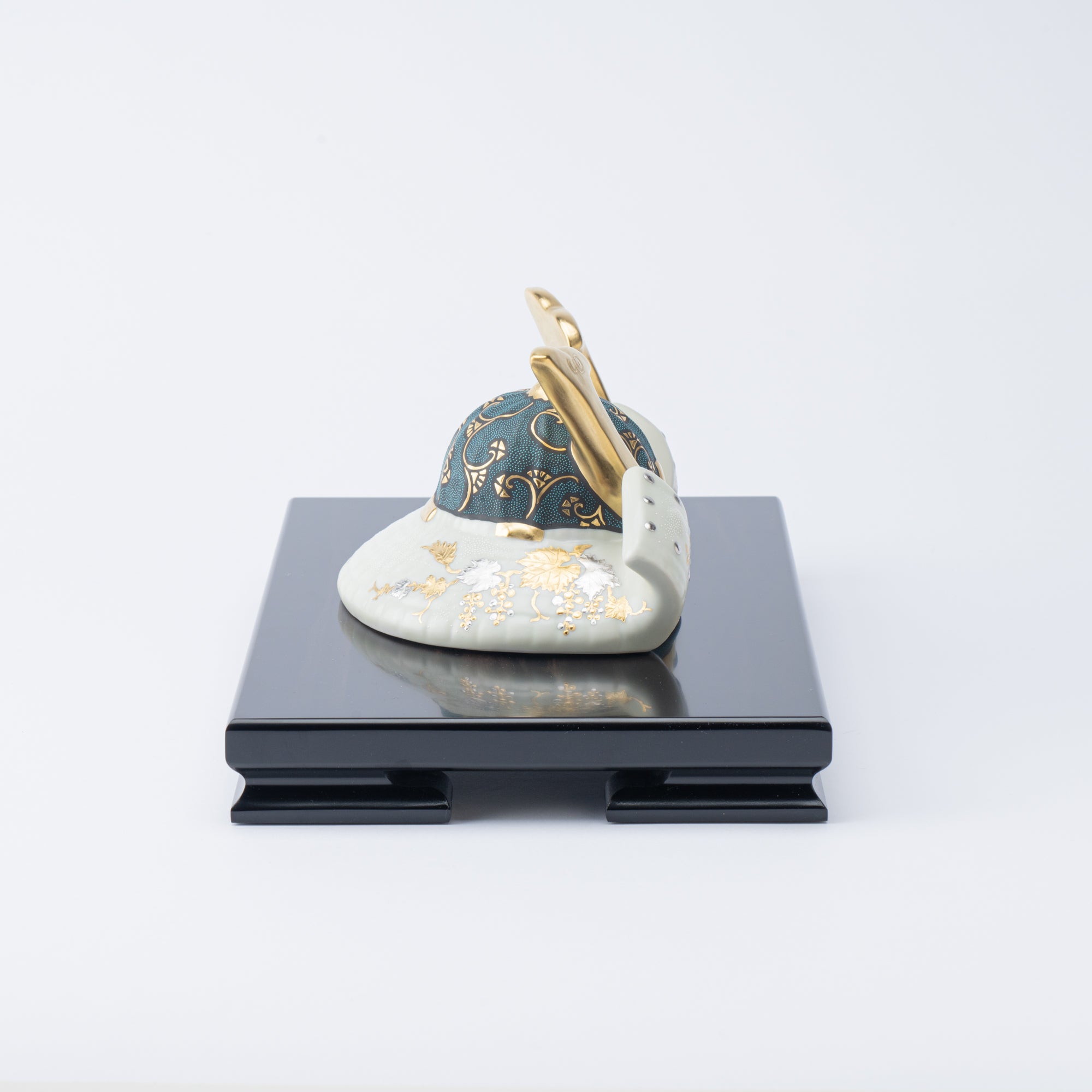
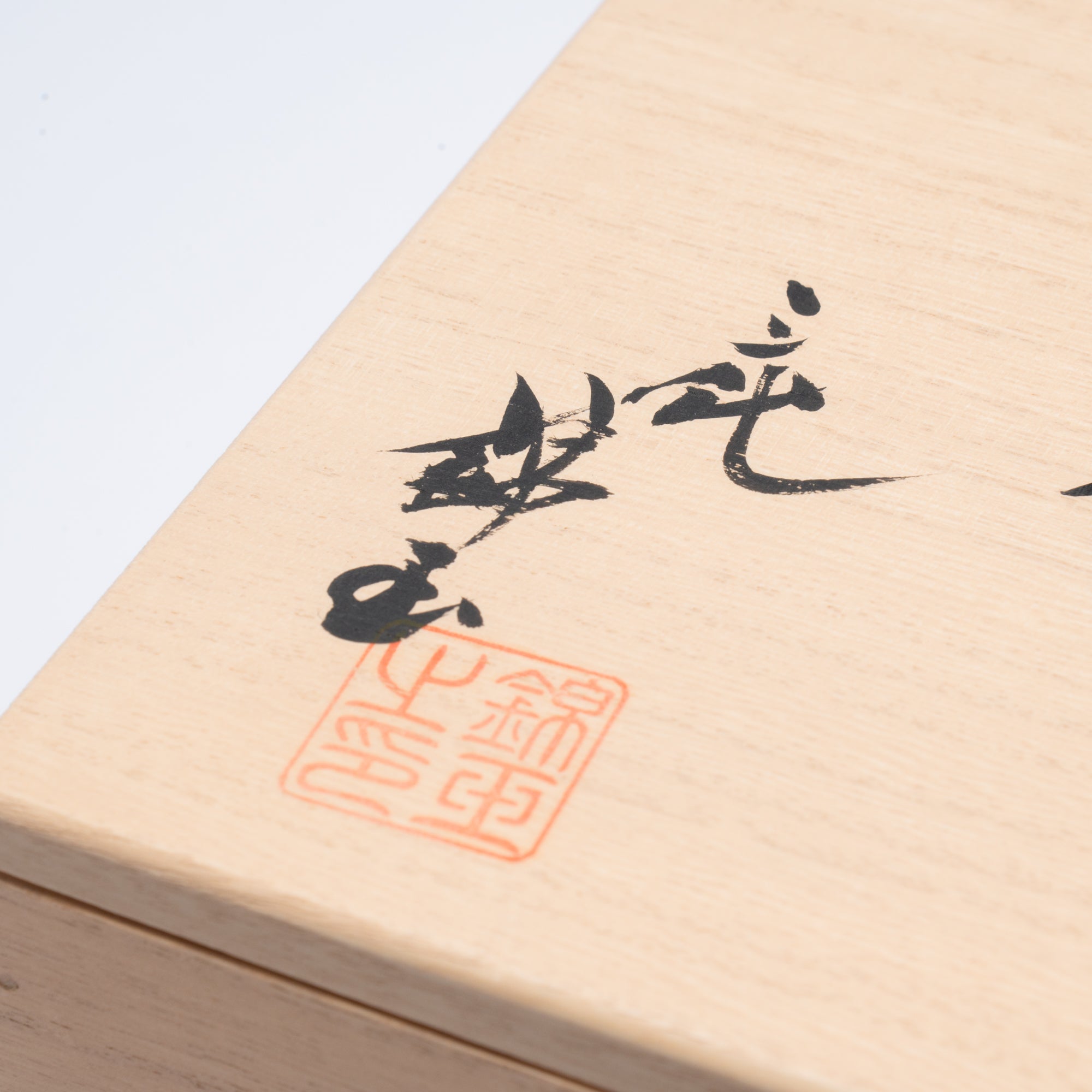
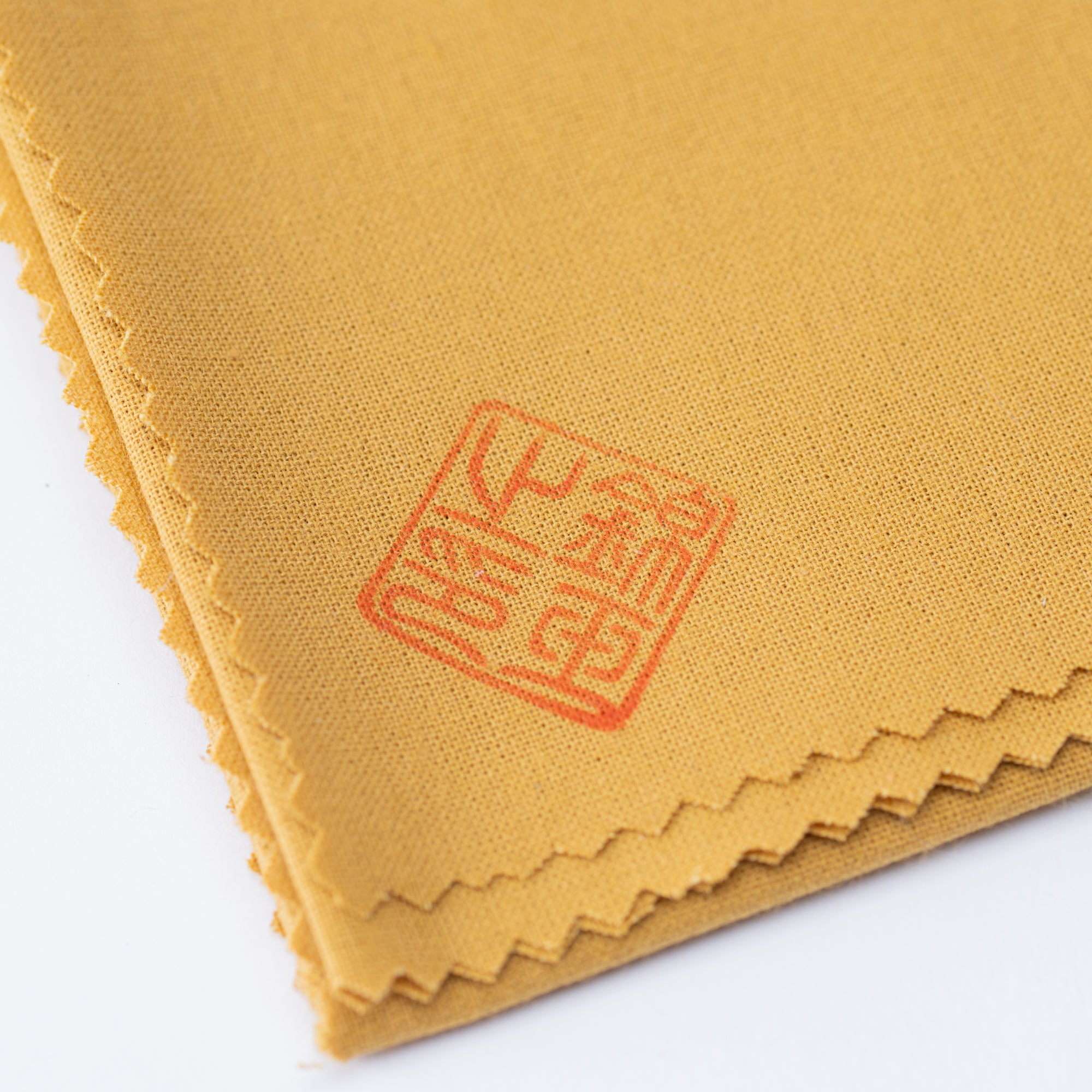
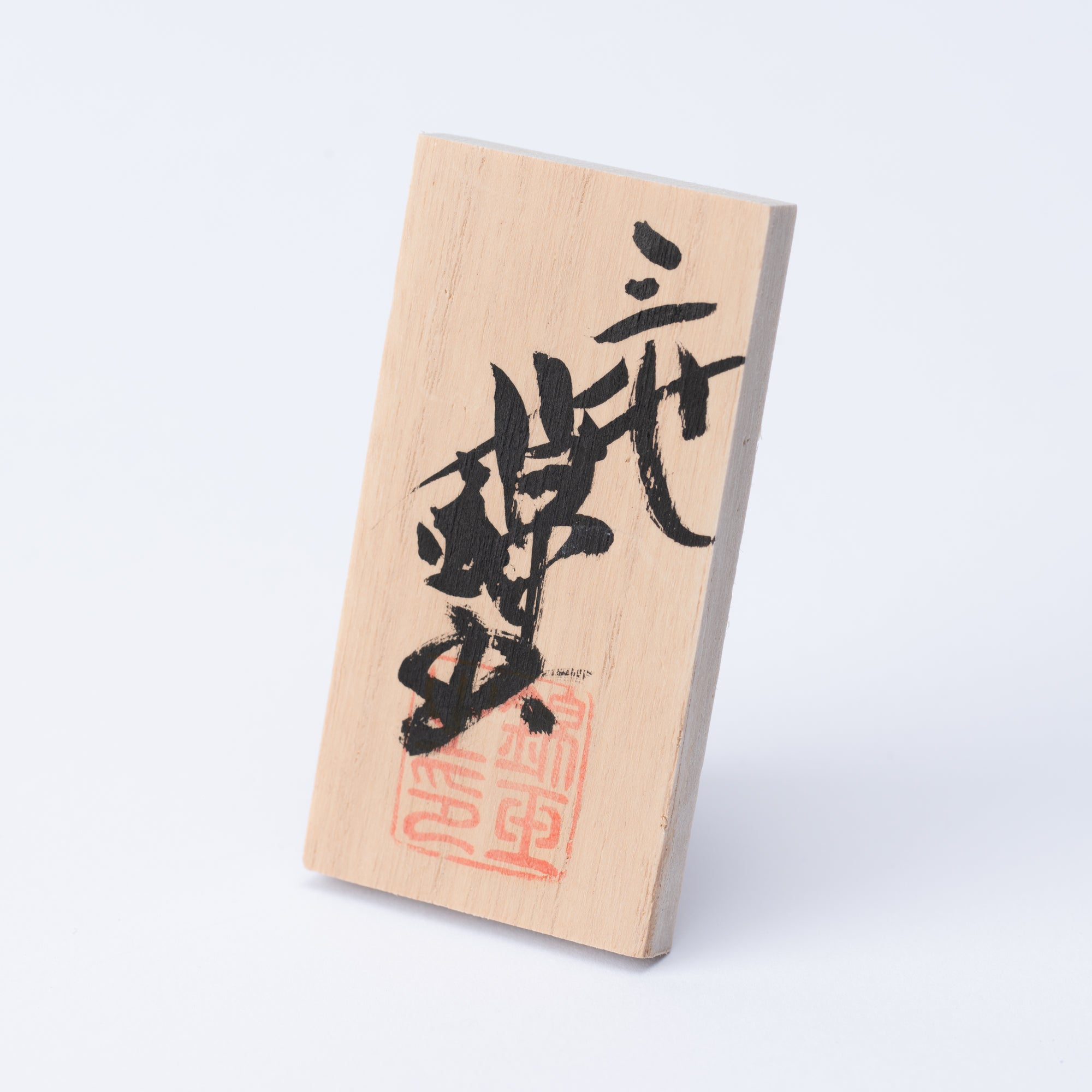
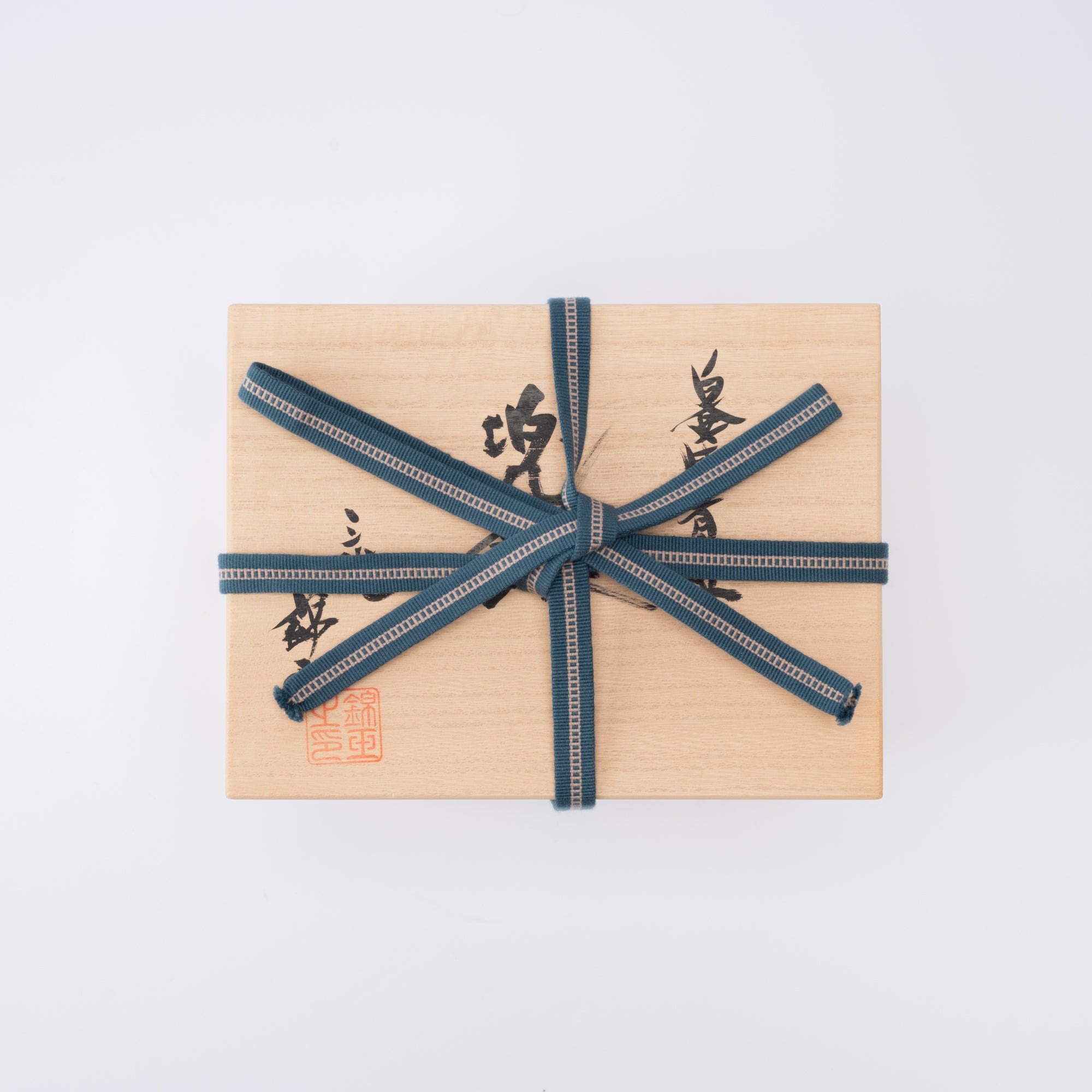
Morikin Aochibu and Shirochibu Kabuto Samurai Helmet Ornament
The Morikin Aochibu and Shirochibu Kabuto Samurai Helmet Ornament expertly combines the aochibu "blue dots," shirochibu "white dots," and morikin "raised gold" techniques. The surface is adorned with platinum and gold grape-patterned leaves, providing a contemporary twist on timeless elegance while honoring the heritage of Kutani ware.
The ornament, with its contrasting black and white base, showcases the exquisite application of these techniques, where blue and white dots converge to create a serene and sophisticated pattern across the helmet. These carefully placed dots enhance the helmet with a delicate luminescence, bringing to light its elegant form with a refined touch.
The shirochibu are thoughtfully positioned among the lush grape vines, where abundant leaves and delicate clusters of grapes cascade elegantly along the helmet’s shikoro section. This section refers to the skirt-like part that completely encircles the base of the helmet. The fukikaeshi, visible from the front and designed to protect the face by deflecting sword strikes from both sides, is adorned with an intricate sakura pattern in platinum and gold, adding an extra touch of refined grace to the overall design.
This type of samurai helmet, known in Japanese as kabuto, was traditionally used by warriors in ancient battles for protection. As such, helmets like this carry a symbolic meaning of "safeguarding one’s life." In Japan, the traditional festival Tango-no-Sekku, also known as Boys' Day, is celebrated each year on May 5th. On this day, families display kabuto ornaments in their homes as an expression of wishes for children’s safety, health, and strong growth.
DETAILS
| Quantity | 1 helmet, 1 wooden stand, 1 wooden plaque |
| Size |
[Helmet] L 13 cm (5.1 in) x W 16 cm (6.3 in) x H 11 cm (4.3 in) [Stand] L 20 cm (7.9 in) x W 30cm (11.8 in) x H 4.0cm (1.6 in) |
| Weight |
[Helmet] 456 g (16.1 oz) [Stand] 850 g (30 oz) |
| Material |
[Helmet] Porcelain [Stand] Wood |
| Package Type | Wooden box |
Maker / Brand
L'œuvre de Nakada Kingyoku incarne l'art Rimpa par son élégance digne et sa beauté gracieuse. Il harmonise l'interaction entre l'espace et l'artisanat miniature, alliant sensibilité moderne et techniques méticuleuses grâce à l'art des points bleus et des reliefs dorés. Son travail rend hommage à son héritage et introduit également des innovations qui subliment le aochibu style.
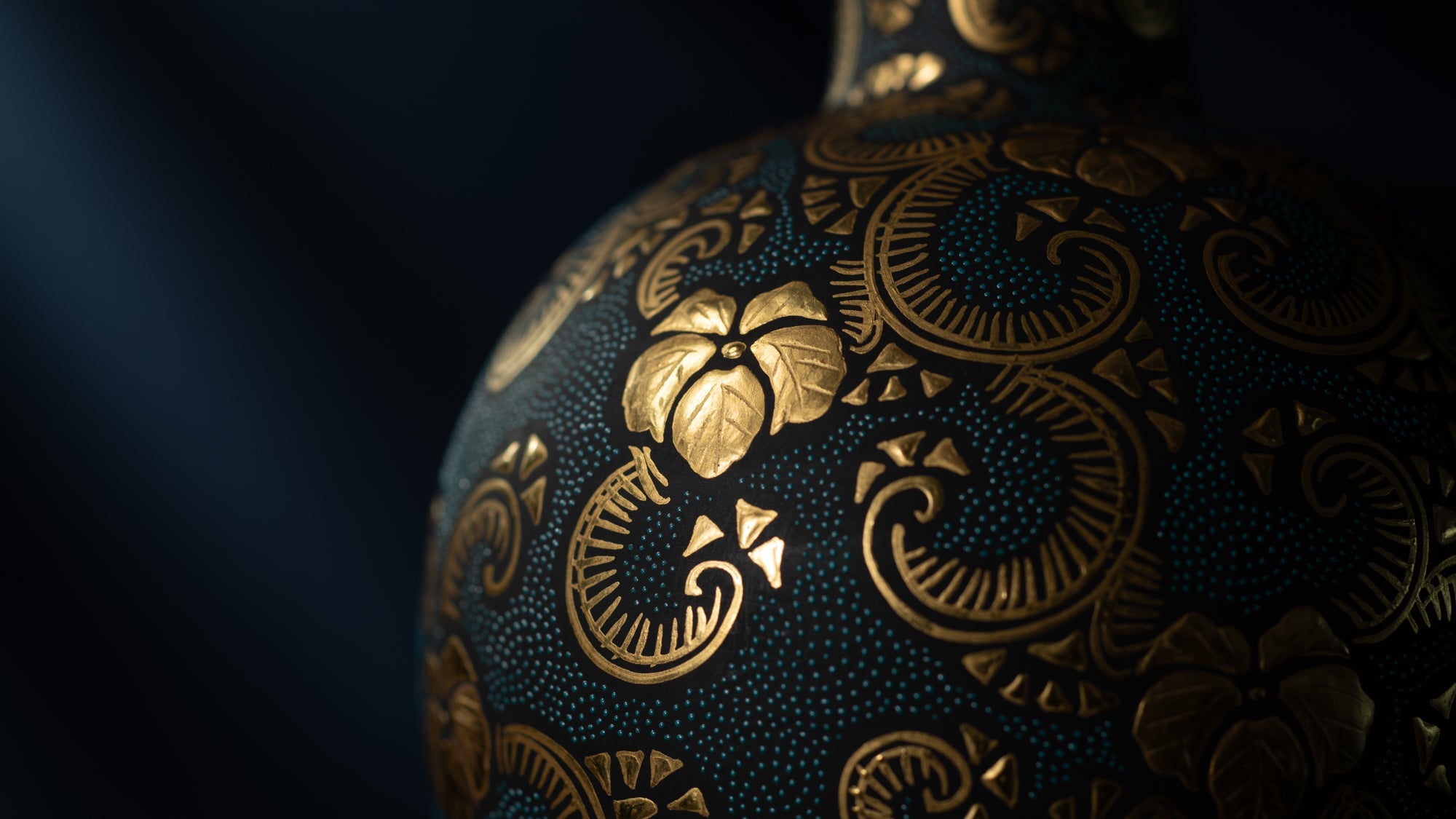
Crafts
La céramique de Kutani est une poterie produite dans la région de Kaga, dans la préfecture d'Ishikawa, dont l'histoire remonte à plus de 350 ans. Elle se caractérise par l'éclat intense des cinq couleurs : bleu marine, rouge, violet, vert et jaune. qui s'appliquent aux lignes audacieuses et audacieuses. Sa longue histoire s'est développée grâce aux efforts inlassables et à l'enthousiasme de personnes qui ont recherché l'innovation tout en préservant la tradition.
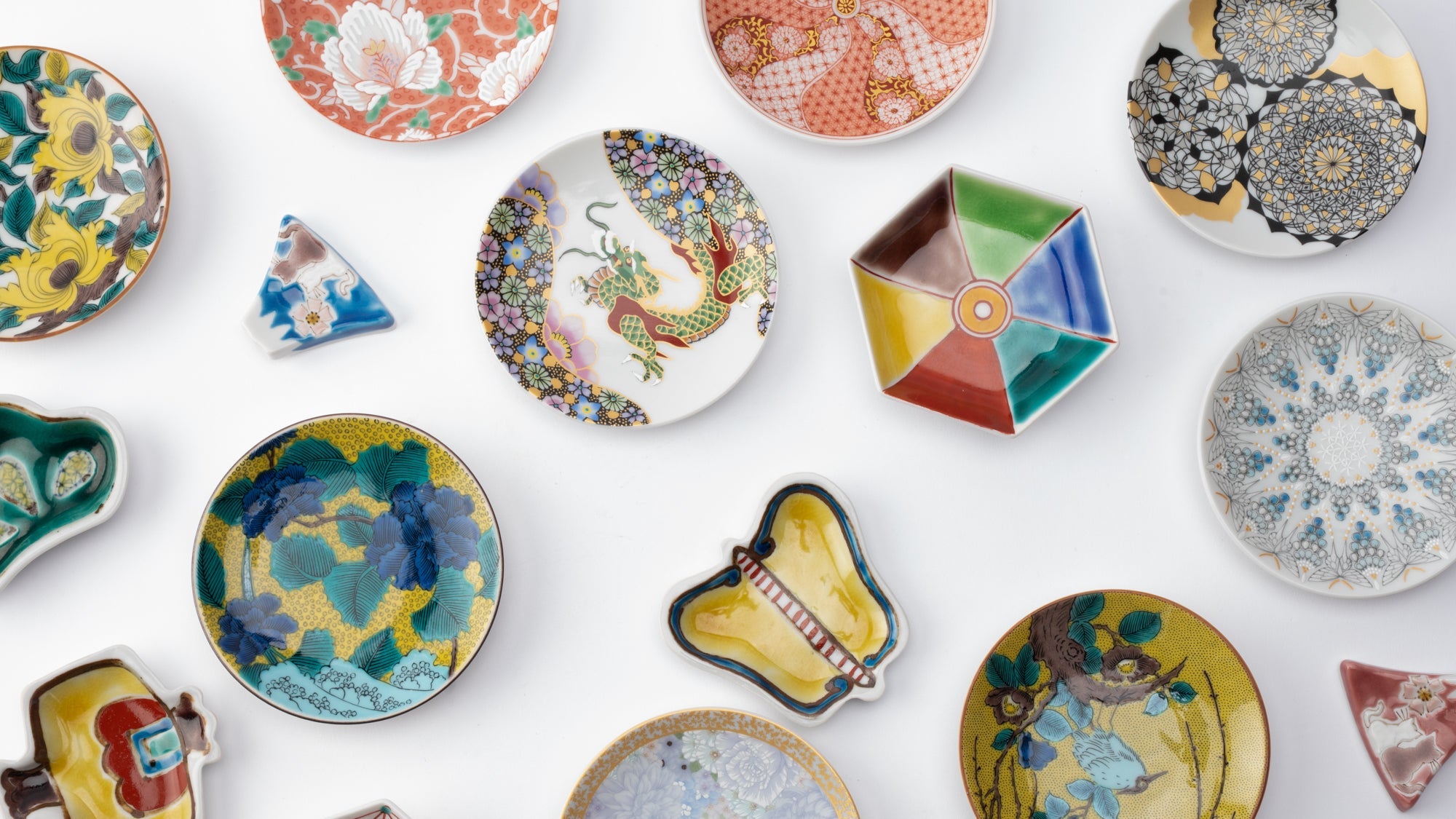
Choisir les options
About Artist
Galerie Musubi
Depuis sa création, Musubi Kiln s'est efforcé de faire découvrir au monde les meilleurs métiers traditionnels des maîtres de tout le Japon.
Ici, dans la galerie, nous mettons en valeur le plus haut niveau de techniques traditionnelles transmises de génération en génération. Vous pourrez y découvrir les œuvres de maîtres qui ont non seulement perfectionné ces méthodes, mais y ont également ajouté leur imagination pour innover encore davantage.
Certains de ces maîtres ont même été nommés Trésors nationaux vivants, un titre qui leur a été décerné par le gouvernement japonais pour reconnaître officiellement leur contribution à l'artisanat et à la culture, consolidant ainsi leur héritage et en faisant d'eux une partie importante de l'histoire de l'art.
Chaque pièce est minutieusement fabriquée à la main pendant de nombreux mois pour créer un trésor intemporel et unique. Et une fois chez vous, vous ferez partie de son histoire.
Bienvenue dans la galerie. Parcourez-la à votre guise.
